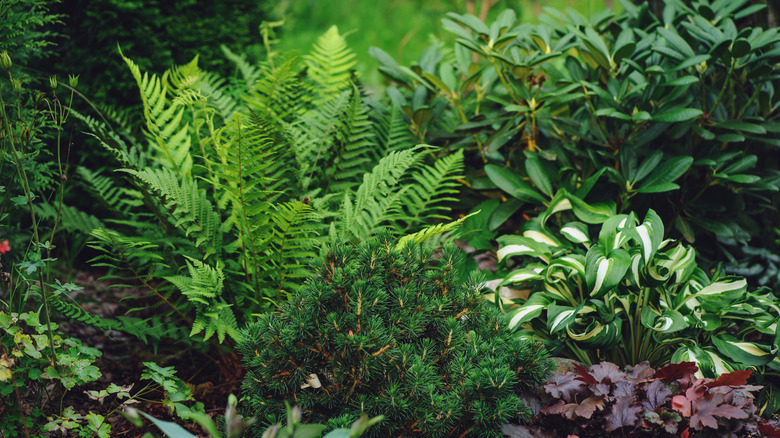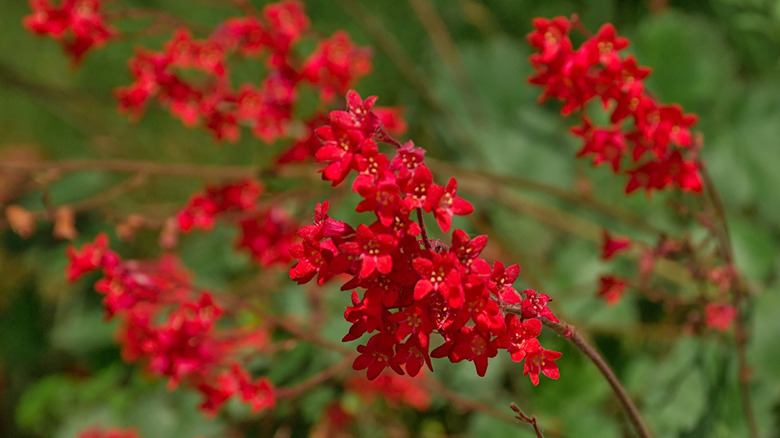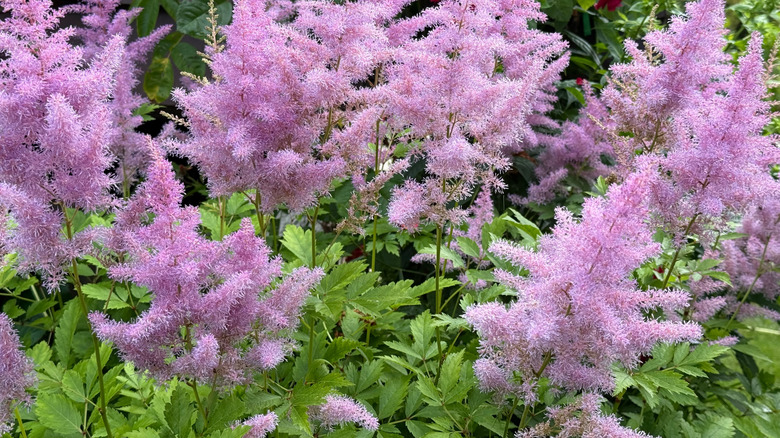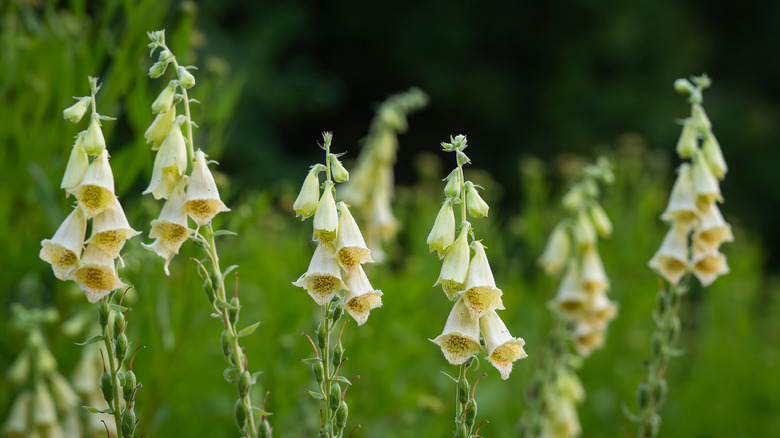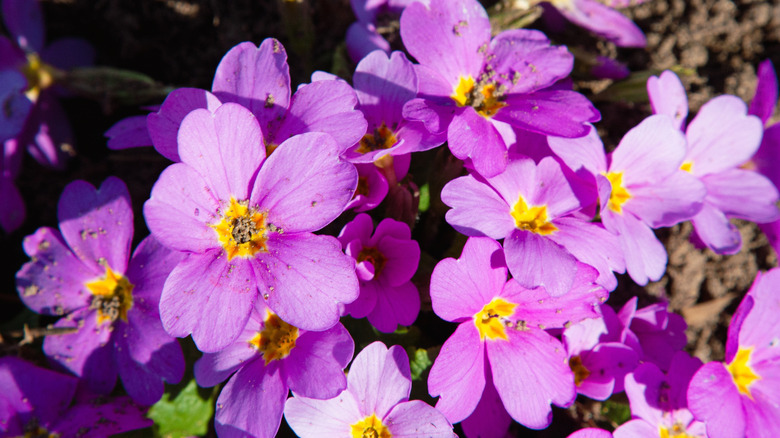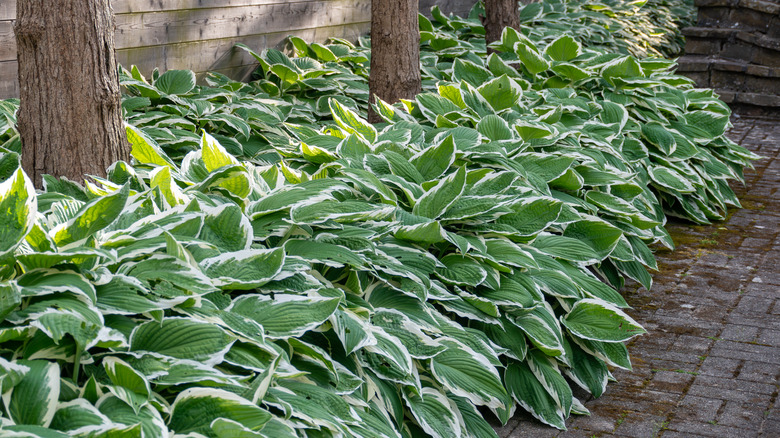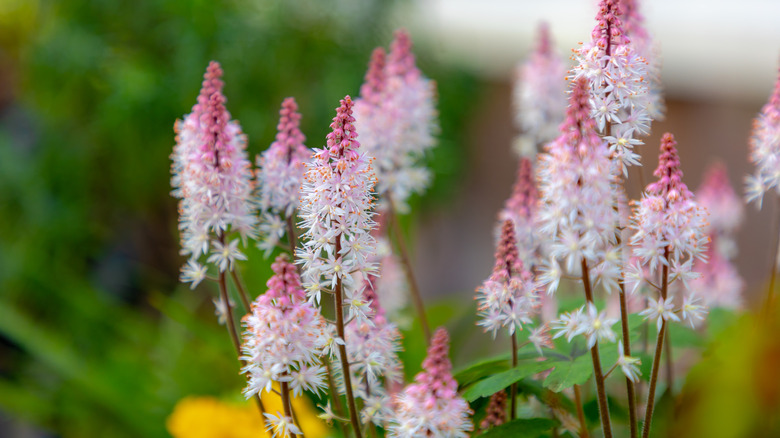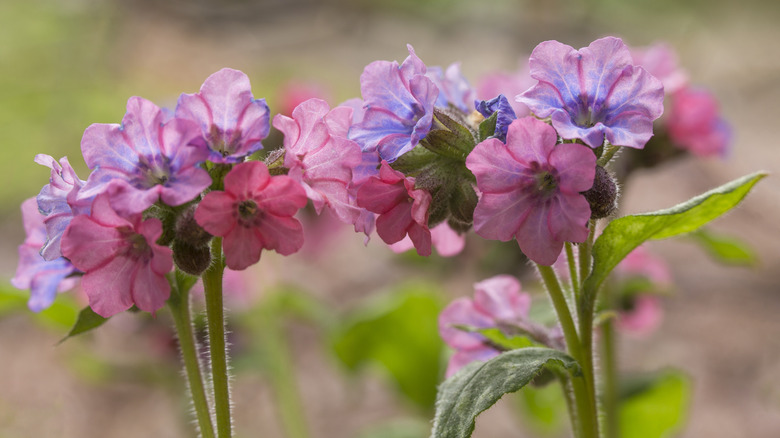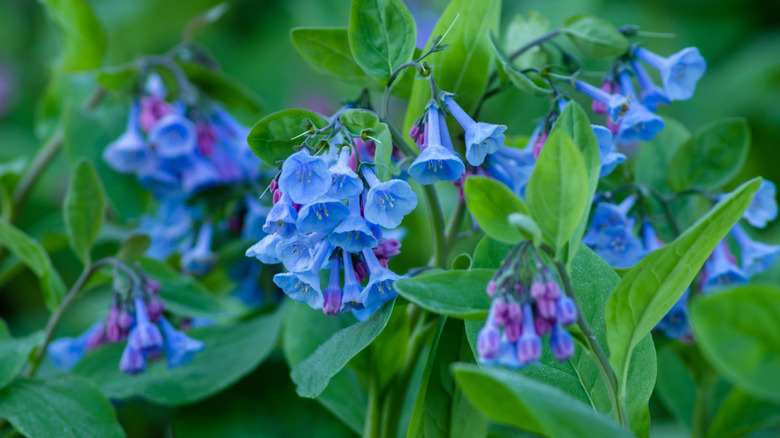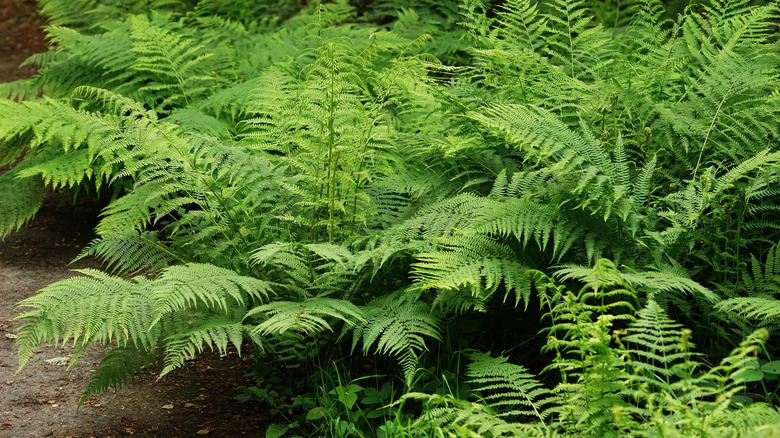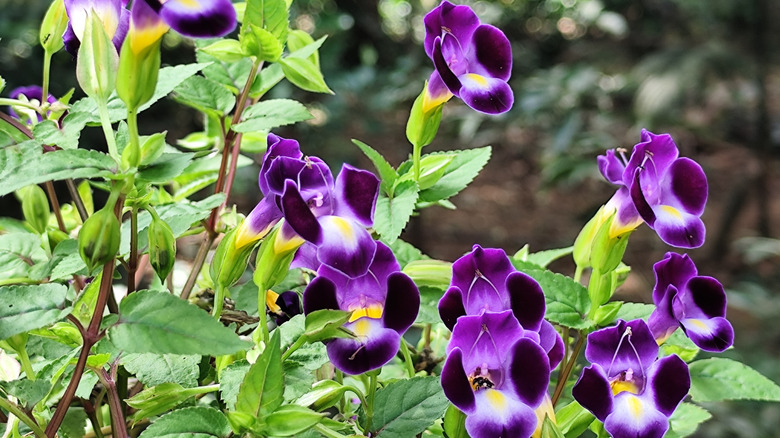The 10 Best No-Mess Shade Plants To Add To Your Garden
Shaded areas in your yard don't mean you can't have beautiful plants and colorful flowers. There are plenty of fast-growing shade plants that effortlessly thrive in shady spots. Picking and choosing the right type is important, and you can arrange the plants based on the type of shade in your yard. Whether it's dappled shade, partial shade, or full shade, there are choices out there that will work for your garden space. Some plants can be messy, however, shedding leaves and petals after blooming.
When planting under existing trees or shrubs, use containers to avoid root interference and create an attractive arrangement. This also prevents competition for resources, which can be pretty intense for the first six inches of the soil beneath trees and shrubs. This competition makes it hard for new plants to get established. Some perennials don't winter as well in pots, so they may need to be brought indoors during the cold weather, or you can choose hardy perennials that withstand frigid winter temperatures. For a low-maintenance yard, consider adding some of these no-mess shade plants that add color and beauty without the extra cleanup.
Coral Bells
Coral bells (Heuchera) are perennials native to North America and are hardy in USDA zones 4 through 9. If you're looking for low-maintenance, this is it. Coral bells feature unique leaves that are ruffled, smooth, patterned, or wavy and come in a variety of colors from almost black to a pretty silver. Their white, pink, coral, or red blooms attract hummingbirds, bees, and butterflies, making them ideal for pollinator gardens. Coral bells tolerate a variety of light conditions, ranging from full sun to shade, and can handle poor soils, humid conditions, and drought.
Astilbe
Astilbe is a herbaceous perennial hardy in zones 3 through 9, but that does depend on the variety. This lovely flowering plant thrives in partial shade to full shade, making it a great addition to your shady spots in the garden. Other names for astilbe include false spirea and false goat's beard. Water is important to the astilbe, so keep it watered well, especially if you live in warmer regions that have hot summers. Before the plant flowers in the spring, fertilize with a granular timed-release fertilizer and again in the fall with a high-nitrogen fertilizer for best results.
Yellow Foxglove
Yellow foxglove (Digitalis grandiflora) is a unique perennial hardy in zones 3 through 8. Yellow foxglove thrives in part shade and blooms from May to June. It thrives in well-draining soils rich in organic matter and kept consistently moist but not soggy. Remove flower spikes after blooming to encourage a second flush of flowers later in the season. This will also keep the plant from looking unkempt and unattractive, which can happen as the seed develops. Avoid this one completely if you have pets, as yellow foxglove is considered toxic to cats, horses, and dogs by the ASPCA.
Primrose
Primrose (Primula vulgaris) is a colorful perennial, hardy in zones 3 through 8. This flowering plant thrives in a variety of light conditions, including full sun, shade, and partial shade, making it a great addition to your shady garden. It tolerates clay, loam, chalky, and sandy soils but thrives in rich, fertile, well-draining conditions. If you live in climates with mild winters, you can plant primrose in the fall and get lovely blooms in the late winter and early spring. Primrose is considered toxic to horses, cats, and dogs by the ASPCA.
Hostas
Hostas are a popular perennial that will add beautiful foliage to your shade garden and lovely flowers that are a huge hit with hummingbirds and butterflies. Hostas thrive in partial sun and dappled shade but can also tolerate full shade. Soil preferences are fertile soil that has been improved with well-aged manure or compost and kept moist but not waterlogged. Avoid planting hostas in clay soil, which often retains excess moisture. Native to Asia, hostas are hardy in zones 3 through 9. This is another plant to be careful with, as it is toxic to horses, dogs, and cats.
Foamflower
Hardy in zones 3 through 8, foamflower (Tiarella cordifolia) is a perennial that is native to North America and blooms in the spring. Foamflower is semi-evergreen, featuring foliage that stays on the plant most of the year. Foamflower thrives in part shade to full shade. If you can't avoid planting it where the light hits, try to make sure it's only morning sun, as the midday heat could be too harsh. Soil needs include rich, fertile soil that has a lot of organic matter in it. Because foamflower dislikes wet soil, make sure it drains well and doesn't stay soggy.
Lungwort
Although the name doesn't sound very pretty, lungwort (Pulmonaria) is a beautiful flowering perennial that features funnel-shaped flowers that go from pink to rose to blue and bloom in the springtime. Lungwort is hardy in zones 3 through 8 and is a native of Asia and Europe. For best results, plant lungwort in part shade to full shade in soil that has been improved with plenty of organic matter and humus. It struggles in hot, dry conditions and may wilt or scorch in direct sunlight. Lungwort is toxic to cats, dogs, and horses.
Virginia bluebells
Virginia bluebells (Mertensia virginica) are a gorgeous perennial hardy in zones 3 through 8 and native to North America. This is one flower that is not really suited for indoor living and does better outdoors, growing the best in partial to full shade, making it a perfect addition to your shady areas. They have a short blooming season — about one month — beginning in early spring. Virginia bluebells are very attractive to hummingbirds and butterflies, although they can pose challenges to some bees due to the depth of the blooms.
Lady fern
Add beautiful greenery and texture to your shade garden with lady fern (Athyrium filix-femina). Lady fern is a light green perennial native to North America and hardy in zones 3 through 7. This easy-to-grow plant thrives in rich soil improved with organic matter and in full to partial shade locations. If the soil is kept moist, it can handle a little more sun, but it can tolerate drier soil than other varieties of ferns. Protect lady fern from wind damage, as its delicate fronds break easily in strong gusts.
Wishbone flower
Wishbone flowers (Torenia fournieri) are a stunning flowering annual that features two-toned flowers that are lilac and deeper purple. Wishbone flowers are hardy in zones 2 through 11 and thrive in partial and dappled shade. Wishbone flowers thrive in rich, fertile soil that drains well. You want to keep the soil moist but not waterlogged to avoid problems. Hummingbirds love this shade plant, making them the perfect addition for gardeners who want to attract these little fliers. Bloom time for wishbone flowers starts in late spring and continues until the first frost.
